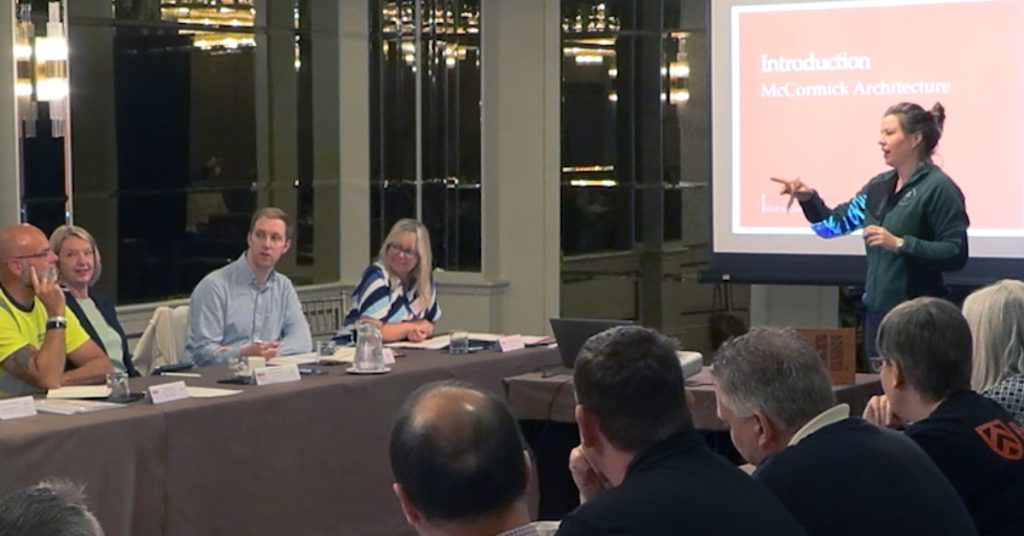In this episode of BNI Education Slots, Martha Williams tackles a milestone for every new member: the 10-minute feature presentation.
Speaking with humour and precision, Martha walks the room through five essential points that can make or break a BNI presentation. The first is to avoid turning the session into a personal life story. While it might be tempting to share your marriage history, kids, or favourite hoover, Martha makes it clear that your slot is for your business – and your business only.

Next, she dismantles the common crutch of PowerPoint overload. Members often read straight from the screen, disconnecting from their audience. Instead, she suggests using slides as support, not a script.
She then underscores the importance of preparation. You only get one shot at a feature presentation every six months – so you should treat it like a high-stakes opportunity. Practice it. Time it. Refine it.
The fourth key is sticking to the time limit. Martha advises mapping out each section to the second and cutting content if it doesn’t fit. Overrunning not only loses impact but encroaches on other members’ time.
Finally, she addresses questions. While they’re often used to fill time, Martha cautions against them – especially if they come at the end and throw the speaker off. If you must take questions, take them mid-way, so you can regain control and finish strong.
Martha closes with reassurance for those who find public speaking daunting. For anyone struggling with nerves, she offers to support them with one-to-one guidance or future sessions focused on presentation confidence.
Her message is simple: use your 10 minutes wisely. Be clear, be prepared, and above all, be business-focused.
Full Transcript
(00:19) So, uh, I’m going to talk to you about how to do your 10-minute feature presentations. So, this is mainly based on newer members, but there’s a lot you can get out of it. As an older member, Sean, take notes. Okay? Some of what I say could be considered controversial. Stick with me. There’s a point.
(00:45) Okay? So, number one, personal. Everybody in this room likes each other mostly. We get on well. In normal life, I want to know when did you get married, who are your children, where did you get your dog from, what’s the best Hoover, but when you stand up and do your presentation, I don’t want to know any of that. Thank you, Sean.
(01:07) I’m putting you on the spot. No pressure. Yeah. I don’t want to know any of that. It’s not relevant to your 10-minute presentation. Your 10-minute presentation is about your business. It is about how you do business, what you would like from your business, and how people in the room can help you get that.
(01:26) So, yes, we talk about the personal, but do that at a social, do that at the beginning of a one-on-one quick session, whatever you’re doing, not in your feature presentation. Number two, I’m really sorry, Sean. So, here is my PowerPoint and um it says that I am McCormic Architecture. Um Sean is our person. And does anyone feel like they’re connecting with me in that moment when I’m like this and when I’m reading exactly what is on the board? This is a big no moment. No. Thank you.
(02:07) PowerPoints are great tools. I love a good PowerPoint, but PowerPoints cannot be your crutch when you give a presentation. I know, shocking eyes, Harry. You’re like, I need a crutch. Give me a crutch. Your PowerPoint is not your crutch. Keep it simple. Keep it with the bold, you know, here’s the headings that you’re going to discuss as a person.
(02:28) If there’s too much on it, there’s a temptation to do this and read off of it, and everyone in the room switches off. And it also means everyone in the room is reading your presentation instead of listening to you. You’ve completely lost it. People buy people. They want to work with you, not with your PowerPoint. So, try and keep your PowerPoints fairly minimal.
(02:48) Next P. I love P’s. One, two, three. Practice. You have one opportunity approximately every six months to do your feature presentation. If you don’t prepare for it and you don’t practice, the chances are it’s going to be a flop and you’ve got six months to wait until you can have another go at it. Practice it at home. Do it in the mirror.
(03:11) Feel like an idiot, but practice it. Get your partner to watch you. Maybe give you a little bit of feedback. Time. Be restrictive. You have 10 minutes, not 8. Don’t finish at 8. That’s two valuable minutes you’re wasting. Don’t finish at 12. Other people have an opportunity to speak later and you’re eating into their time.
(03:33) So, your intro, maybe that’s 30 seconds. Something about this section, right? I’m going to do specifically 2 minutes and 30 seconds on that. And I’m going to practice it in those times. And if I can’t get through what I want to say in that time that I have, something’s got to go because it has to stick to that time.
(03:51) I need to move on. Keep to the point. Which also means that you don’t want to be speaking like this because then nobody can understand what you’re saying and you actually sound a little bit crazy and manic and it’s far too early in the morning. Say less, make it more valuable. My last point is questions. Everybody loves a good question.
(04:09) Sometimes we can say any questions because we’re like not time this. I’ve got a minute left and I kind of need to fill it up. Don’t do questions. Someone sits there, say you’ve done your whole presentation, puts their hand up, asks a question, totally throws you off and you’re like, “Oh my God, don’t say that, don’t know what the answer is.”
(04:30) And that is the lasting impression everyone in the room is going to get. They’re not going to get the other nine minutes of really strong presentation that you gave. They’re going to get the last second where you weren’t really prepared for that. If you must do questions, if you feel like it’s really important, do them in the middle.
(04:46) And then if someone asks something that totally throws you off, you have time to come back to your point and make sure you’re on track. Okay, there were five points. Can anyone shout out one of the points? Go. Time. Oh, time. Why is time important? Not to take other people’s time. Not to take other people’s time.
(05:04) Another one. Personal. What do we not like? Focus on your business. Focus on the business. Don’t waffle. It’s not the right time. Another one. Questions. Cuz that was the last one. I love it. Questions. We’ve done three. What’s another one? Practice it. It’s very important and we don’t like too much PowerPoints.
(05:26) Little side note, not everybody is as comfortable doing a presentation as everybody else. Today’s been very specific about 10 minutes and how we do them at BNI. If actually the idea of doing a presentation to you is the most terrifying thing you’ve ever done and you can barely get up here and talk, I am more than happy to talk to people one-on-one about let’s go back to basics.
(05:47) How do you just manage getting through it? Or we can do a big chat about the anxieties of public speaking at another time. But today’s takeaway is the five things. Stay on track for your feature presentation. Make it count. Thank you. [Music]



 Subscribe for the latest BNI Education Slots
Subscribe for the latest BNI Education Slots